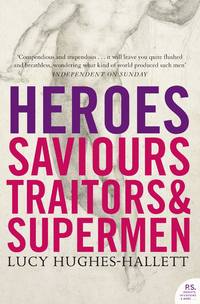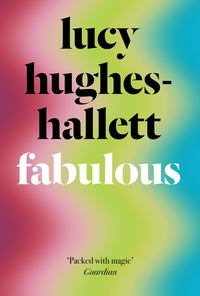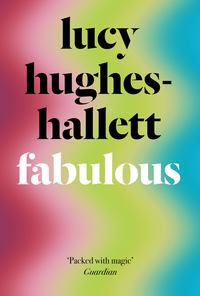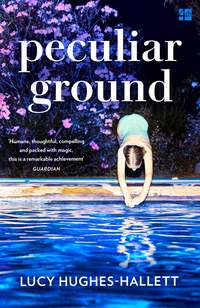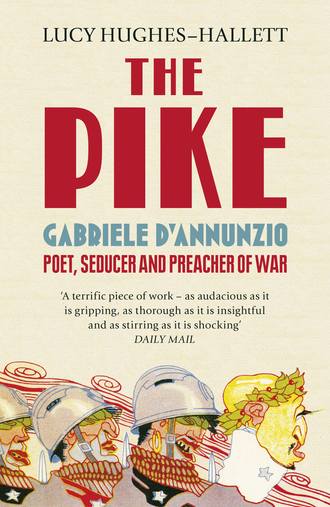
Полная версия
The Pike: Gabriele d’Annunzio, Poet, Seducer and Preacher of War
His politics were as eclectic as his cultural tastes. He was not a party man, having far too lively a sense of his unique importance to subscribe to a programme imposed by others. Besides, the period when he was most active politically was a time when groups which would, only months after he marched on Fiume, separate out into mutually hostile phalanxes, made common cause, the extremes meeting to oppose the centre. Nationalism (now identified with the right) and syndicalism (leftist) were, according to one of d’Annunzio contemporaries, alike ‘doctrines of energy and the will’. Both preferred violence to negotiation; both understood the political process in terms, not of reason, but of myth. In a ‘venal and materialist society’ of democratic ‘stockbrokers and chemists’, they were heroic: the ‘only two aristocratic tendencies’. What mattered to d’Annunzio, and to the fascists after him, was not a theoretical programme, so much as style, vitality, vigour.
In Fiume, d’Annunzio drew up a constitution for his little state. ‘The Charter of Carnaro’, as he called it, is in many ways a remarkably liberal document. It promised universal adult suffrage and absolute legal equality of the sexes. Socialists applauded it. But in the 1920s it was hailed as ‘a blueprint of the fascist state’.
There is an acceptable d’Annunzio, who writes lyrically about nature and myth, and there is an appalling d’Annunzio, the warmonger who calls upon his fellow Italians to saturate the earth with blood, and whose advocacy of the dangerous ideals of patriotism and glory opened the way for institutionalised thuggery. Those who admire the former have often tried to ignore, or even deny, the existence of the latter. After the fall of Mussolini it became conventional to suggest either that d’Annunzio could not really have had any sympathy for fascism, because he wrote such beautiful poetry, or – conversely – that because his politics were deplorable, his poetry cannot really be any good. I contest both arguments. The two d’Annunzios are one and the same.
D’Annunzio knew exactly how ghastly conflict could be. As a young man he visited hospitals out of curiosity. He was an attentive nurse to his mistresses when they fell ill, loving them the most, he told them, when they were suffering or near death. In wartime he spent weeks at the front, witnessing the slaughter, smelling the unburied corpses. He made careful notes about wounds, and the effects of decomposition on the bodies of his dead friends. In his wartime oratory he used the word ‘sacrifice’ over and over again in knowing reference to religious fables (pagan and Christian) where young men were killed that the wider community might benefit. When two fighter pilots of whom he was fond went missing in 1917 he wrote in his private diary that he devoutly hoped they were dead.
He was one of the cleverest of men, but also one of the least empathetic. He was as ruthless and selfish as a baby. ‘He is a child,’ wrote the French novelist, René Boylesve, ‘he gives himself away with a thousand lies and tricks.’ Child-like, he saw others only in relation to himself. In love, he was adoring, but once he had tired of a woman he ceased to think about her. He was an excellent employer (though far from punctilious about paying salaries). He was moved by the sweetness of small children. He was very kind to his dogs. But the woman who brought in his meals, he once wrote, was no more to him than a piece of furniture, a cupboard on feet.
One of his most famous poems is about the Abruzzese shepherds who could be seen at summer’s end traipsing along the beaches, robed and bearded like biblical patriarchs, their woolly charges churning around them like warm surf. It is a lovely lyric, tender and grand; but to those who know d’Annunzio it cannot be read as harmless pastoral. He wrote often about the sheep herded before dawn through the sleeping streets of nineteenth-century cities, their wool eerily silvered by the moonlight – a commonplace sight which few other writers notice. To him the animals weren’t pretty reminders of the countryside. They were hosts of creatures on their way to be slaughtered. So were armies. The thought didn’t appal him. In 1914, three years before his British contemporary Wilfred Owen made the same comparison, d’Annunzio was likening the herds of bullocks who churned up the roads of northern France, driven to the front to feed the army, to the trainloads of soldiers going the same way. Like Owen, d’Annunzio knew that in war men died as cattle. Unlike Owen, he considered their death not only dulce et decorum, sweet and fitting, but sublime.
One evening in Rome in May 1915, d’Annunzio was chatting lightly in his hotel room with a couple of acquaintances. One was the sculptor Vincenzo Gemito, the other was the Marchese Casati (with whose wife – ‘the only woman who could astonish me’ – d’Annunzio had a long amitié amoureuse). Then, this agreeable interlude over, he stepped out onto his balcony to deliver one of his most incendiary speeches, urging the crowds beneath his window to transform themselves into a lynch mob. ‘If it is considered a crime to incite citizens to violence then I boast of committing that crime.’ Three paces and a window pane separated the sphere in which he was an urbane socialite and man of letters from that in which he was a frenzied demagogue calling upon his countrymen to murder their elected representatives and to drench the soil of Europe with blood. Both personae are genuine. In writing about him I have tried to find a form which does justice to them both.
D’Annunzio’s must be one of the most thoroughly documented lives ever lived. He had a notebook in his pocket at all times. Those notebooks were his precious raw material. Their contents reappeared in his poems, his letters, his novels. When he flew (or rather was flown – he never learned to pilot himself) he took a specially bought fountain pen with him so that he could jot down his impressions even while dodging anti-aircraft fire. He noted the clothes and sex appeal of the women he met so immediately that it seems he must have been reaching for his book even before they turned away. Eating alone at home, he wrote down a description of the maid as she served him his lunch. A discriminating eater, he also made notes on the asparagus.
His works are full of descriptions of sex so candid they still startle. In his morning-after letters he would describe back to a lover the pleasures they had enjoyed, an intimate kind of pornography which was also an aide-mémoire for himself and, often, the first draft for a fictional scene. We know in enormous detail what d’Annunzio did in bed, or on the rug before a well-banked-up fire (he felt the cold dreadfully), or in woods and secluded gardens on summer nights. We know he liked occasionally to play at being a woman, pushing his penis out of the way between his thighs. We know how much he enjoyed cunnilingus, and that he therefore preferred a woman to be at least five foot six inches tall, or, failing that, to wear high-heeled shoes, so that when he knelt before her his mouth comfortably met her genitals. We have his descriptions not only of his lovers’ outward appearances but of the secret crannies of their bodies, of the roofs of their mouths, of the inner whorls of their ears, of the little hairs on the back of a neck, of the scent of their armpits and their cunts.
The notebooks, d’Annunzio’s enormous literary output, and his even larger correspondence, have allowed me to show the man’s inside: his thoughts, tastes, emotions and physical sensations; how moved he was by the pathos of a pile of dead soldiers’ boots; how he relished the slithery warmth of a greyhound’s coat under his hand. And because he was a public figure for over half a century, I have been able to draw on dozens of others’ accounts of him and his doings to show his outside as well. This book has many viewpoints. And because d’Annunzio’s life, like any other, was complex, they sometimes contradict each other. An acquaintance, seeing him in Florence, leaning on the stone parapet over the River Arno one grey November day, noticed the elegance of his raincoat (he was always dapper) and tactfully refrained from greeting him, supposing him to be absorbed in the composition of a poem. From his own account, though, we know he could think of nothing but of whether his mistress would shortly appear, and what he would do with her once he had got her back to the room he kept for their assignations, where he had already stowed scented handkerchiefs behind cushions and strewn the bed with flowers.
I have made nothing up, but I have freely made use of techniques commoner in fiction-writing than in biography. I have not always observed chronological order; the beginning is seldom the best place to start. Time’s pace varies. I have raced through decades and slowed right down, on occasion, to record in great detail a week, a night, a conversation. To borrow terms from music (and one of the themes of d’Annunzio’s life to which I have not had space to do full justice is his musical connoisseurship) I have alternated legato narrative with staccato glimpses of the man and fragments of his thought.
I have tried to avoid the falsification inevitable when a life – made up, as most lives are, of contiguous but unconnected strands – is blended to fit into a homogeneous narrative. In Venice in 1908 for the premiere of The Ship, d’Annunzio attended banquets and civic ceremonies in his honour, delivering convoluted speeches full of noble sentiments and incitements to war. He records, though, that ‘between one acclamation and another’ he spent a great deal of time hunting for the perfect present for his mistress. An antique emerald ring – which he could certainly not afford (he was at this period unable to go home for fear of his creditors) – satisfied him, but there was still the question of a box to put it in. He visited half a dozen places before finding the very thing – a pretty little casket in green leather (to match her eyes) in the shape of a miniature doge’s hat. I aim to do justice both to the man pontificating at the banquet, and the man fossicking through curio shops.
Two images help to describe my method. The first dates from 1896, when d’Annunzio was thirty-three, and staying in Venice to be near Eleonora Duse. There he came to know Giorgio Franchetti, who had recently bought the Ca’ d’Oro, the most fantastical and ornate of all the palaces along the Grand Canal, and was restoring it to its fifteenth-century Venetian-Moorish splendour. Franchetti was working himself on the installation of a mosaic pavement, crawling, covered with sweat and stone dust, over the varicoloured expanse of rare stones with slippers strapped to his knees. There d’Annunzio would join him, laying tiny squares of porphyry and serpentine in the fresh cement. Placing comments and anecdotes alongside each other like the tesserae in a pavement, my aim has been to create an account which acknowledges the disjunctions and complexities of my subject, while gradually revealing its grand design.
Another image comes from Tom Antongini, who knew and served d’Annunzio well for thirty years as his secretary, agent, personal shopper, and, in the sexual sphere, Leporello to his Don Giovanni. Antongini described the hectic months d’Annunzio spent in Paris in 1910 as ‘kaleidoscopic’. In an old-fashioned kaleidoscope, fragments of jewel-bright glass are rearranged as the cardboard tube is twirled – the same parts, a changing pattern. Images and ideas recur in d’Annunzio’s life and thought, moving from reality to fiction and back again: martyrdom and human sacrifice, amputated hands, the scent of lilac, Icarus and aeroplanes, the sweet vulnerability of babies, the superman who is half-beast, half-god. I have laid out the pieces: I have shown how they shift.
D’Annunzio has been much disliked. His contemporary, the philosopher and historian Benedetto Croce, said he was ‘steeped in sensuality and sadism and cold-blooded dilettantism’. Tom Antongini, who was fond of him, wrote that he ‘has been accused of polygamy, adultery, theft, incest, secret vices, simony, murder, and cannibalism … in short, Heliogabalus is his master in no particular’. When, on his death in 1938, there was discussion in the British Foreign Office as to whether it would be in order to offer official condolences, the proposal was vehemently opposed by Lord Vansittart, who called him ‘a first-class cad’. This hostility persists. Mark Thompson, the outstanding historian of Italy’s part in the Great War, writes with judicious moderation about General Cadorna, the Italian commander-in-chief who sent hundreds of thousands of soldiers to a certain death. Thompson’s tone, in describing Mussolini and the beginnings of fascism, is temperate. But these are the words he uses of d’Annunzio: ‘odious’, ‘vicious’, ‘psychotic’.
I have been sparing of such language. I am a woman writing about a self-styled ‘poet of virility’ and a pacifist writing about a warmonger, but disapproval is not an interesting response. D’Annunzio cannot be dismissed as being singularly hateful or crazy. He helped to talk his country into an unnecessary war, and the views he expressed, then and throughout his life, are frequently abhorrent. But to suggest that his thinking was aberrant is to deny the magnitude of the problem he presents. Over and over again throughout the Great War, d’Annunzio called upon teenage conscripts, very few of whom had any idea what Italy’s war aims were, to die because the blood of those who had already died called out to them from the earth to emulate their ‘sacrifice’. At the time of writing a very similar thought – less floridly expressed – is regularly advanced to justify the continuation of the war in Afghanistan. Many have died. To admit that the fighting is futile, and put a stop to it, would be to betray them. So more must die. This reasoning may be odious (I consider it so). But if to be ‘psychotic’ is to think in a way few healthy people think, then it is not psychotic. It is all too normal.
In 1928, Margherita Sarfatti published a biography of her lover, Mussolini. In it she praised d’Annunzio for having ‘prophesied, preached and fought the war’ (preaching war being, in fascist opinion, a laudable practice) and hailed the poet as having given expression to ‘an arrogant, knightly, derisive, fascinating and cruel spirit that belongs to the immortal youth of fascism’. Later Sarfatti, who was Jewish, would have to leave Italy hastily in order to escape that ‘fascinating and cruel spirit’, but for the time being she adored it, and admired d’Annunzio, whose work seemed to her to be as full of ‘daring, hope, greatness and limitless faith’ as the sound of the blackshirts belting out popular songs as they converged on Rome in October 1922.
In the first winter of the Great War, d’Annunzio was living in France, and made several trips to the front as a privileged observer. There he saw – or pretended to have seen – dead soldiers bound upright, to stakes, in groups of ten. At the time, Mussolini had only recently left the Italian Socialist Party and had yet to find a new following. But already d’Annunzio had found an image all too hideously symbolic of the militarism which he himself so enthusiastically approved, and of the political creed which would shortly grow out of it. Those bloody clumps of upstanding corpses reminded him of an emblem frequently shown on Roman coins, one which would soon, once again, be omnipresent in Italy, that of a bundle (a fascio) of rods tied around an axe. The axe signified the law’s power over life and death. The bundled rods represented the gathering of powerless individuals into a single powerful entity, a ‘fascist’ state.

SIGHTINGS
ROME, 1881. Here is Gabriele d’Annunzio, seventeen years old, just out of school, the precocious author of two highly praised volumes of verse. Observing him is Edoardo Scarfoglio, himself only twenty-one, another ambitious young man making his way in the ancient capital of the eleven-year-old Italian nation. Scarfoglio is in the office of the weekly paper of which he is editor. The room is full of chattering people. Scarfoglio is lounging on a bench, yawning, when in comes the juvenile poet. ‘At the first glimpse of this little fellow with his curly head and sweetly feminine eyes … I started and sprang up, extraordinarily struck … Gabriele was the object of a craze, of an incredible cult, for all of us. He was so friendly and modest, and he carried the weight of his newborn glory with such grace that everyone ran to him, spontaneously drawn by feelings of friendship and affection.’
The curls will soon be gone (by the age of thirty d’Annunzio will be almost completely bald) and the modesty may never have existed outside of Scarfoglio’s imagination. Already the young poet is an adroit self-publicist. A few months before his arrival in Rome, he anonymously informed newspaper editors of his own untimely death in a fall from his horse. The pathetic story of the brilliantly gifted youth, cut off at the outset of what would surely have been a dazzling career, was widely reported and lamented over. The second volume of poems by the tragic boy, published later that month, sold well. By the time the ‘mistake’ was discovered, d’Annunzio was considerably more famous than mere merit, however substantial, could have made him.
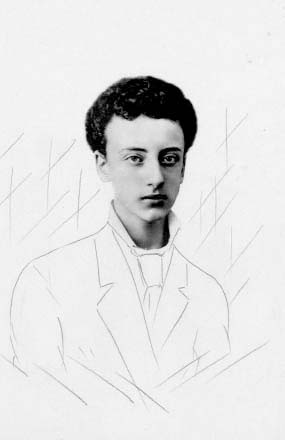
Scarfoglio will lament that, only a few months after that first meeting, the androgynous innocent is on his way to becoming a smart young man about the booming capital. ‘I will never forget how stupefied I was, the first time I saw Gabriele all spruced up and perfumed for a party.’ At the age of twenty, d’Annunzio (seen by Scarfoglio as being like a ‘timid, wild girl’) will demonstrate his worldly ambition and his virility by impregnating and eloping with a duke’s daughter. At the age of twenty-six, already the author of four volumes of poetry and two of short stories, as well as of reams of knowing, gossipy journalism, he will publish the first of his novels.
1893. D’Annunzio, now aged thirty, is living in Naples. He left Rome to escape from his creditors, and before the end of the year he will have to scarper from Naples for the same reason. He has written three novels and dozens of stories which are beginning to make money, but never enough to pay off his exorbitant debts. He has abandoned his wife and three sons, and left Elvira Fraternali, whom he loved passionately for eight years. Now he is living with the Sicilian princess Maria Gravina, together with whom he faces a jail sentence for adultery (a general amnesty will spare them). His writing – as scandalous as it is brilliant – and his flamboyant lifestyle, his debts, his duels and his love affairs, have made him, by this time, an international celebrity.
During this period of his life, in personal terms so harum-scarum, the groundwork of d’Annunzio’s political thinking is being laid. He has been reading Nietzsche and finding in the philosopher’s work confirmation of his own elitism. Acting the pike again, he makes provocatively Nietzschean declarations. ‘Man will be divided into two races,’ he writes. ‘To the superior race, which shall have risen by the pure energy of its will, all shall be permitted; to the lower, nothing or very little.’ D’Annunzio never doubts his own membership of the former class.
Now he is enthralled by Richard Wagner. D’Annunzio adores music, but he is not himself a musician. To hear it he must seek out those who are. He goes repeatedly to call on the composer Niccolò van Westerhout and prevails upon him to play entire operas on the piano, while he follows the libretto, going through Tristan and Isolde at least ten times. He is learning to hear the patterning of reprise and variation, to feel the great surges of emotion released by the music and to understand how they are controlled. He keeps van Westerhout at the piano for hours and hours. ‘Tristan filled his spirit with a kind of morbid obsession.’ He insists on hearing certain passages over and over again. He is transfixed by the ‘sufferings that begin with the love potion’.
At home he is in desperate straits. The bailiffs are encamped outside the door of his borrowed lodgings. Maria Gravina’s sanity is precarious. But d’Annunzio has the knack of closing himself off from all emotional and practical demands. The musical sessions with van Westerhout pass straight into his influential essay on Wagner and into his suicide-haunted novel Il Trionfo della Morte (The Triumph of Death), in which the lovers spend days on end playing and singing Tristan and Isolde together, before the hero drags his mistress over a cliff in an involuntary liebestod (love-death).
Later that year Maria Gravina will try to kill herself. His wife has already attempted suicide.
August 1895. D’Annunzio is sunbathing stark naked on the deck of a yacht bound for Greece. He has recently received his largest payment to date, for the French edition of his first novel, Piacere (Pleasure). Among his fellow guests on the cruise is his French translator, Georges Hérelle.
Hérelle is disappointed. He has been looking forward to earnest literary discussions interspersed with serious sightseeing, but d’Annunzio seems only to want to bask in the sun while swapping smutty jokes with the other young Italians on board, and fretting about the difficulty of getting his shirts properly ironed ready for dinner engagements in port. When they go ashore at Eleusis, Hérelle notes that d’Annunzio ‘hardly looks, chatting all the time of things which have nothing to do with our excursion; about amorous adventures, about society people’. On train journeys he doesn’t feast his eyes on the passing landscape, he puts a silk handkerchief over his face and dozes. In Patras and again in Piraeus he goes off, almost as soon as they’ve landed, to find a prostitute. ‘Truly,’ notes Hérelle in his journal, ‘there is something puerile about Gabriele d’Annunzio.’
What Hérelle doesn’t grasp is that d’Annunzio’s mind works so fast he doesn’t need to gaze at length in order to receive impressions, or to preserve a solemn silence in order to reflect upon what he sees. Within days of returning from the cruise he will start planning his first play, La Città Morta (The Dead City), inspired by the party’s visit to Mycenae. Eight years later he will write his modern epic, Maia. The visit to a Patras brothel which Hérelle found so sordid (‘These awful women … these sailor’s women … I cannot understand how in Greece one can waste time so foolishly’), will appear transmuted into a half comic, half profoundly sorrowful episode in which Helen of Troy, terribly aged, symbolises the transience of the pleasures and beauties of the flesh.
December 1895. The Caffè Gambrinus, Florence. André Gide, who is in the café with him, is watching d’Annunzio carefully. ‘He is greedily eating little vanilla ice creams served in cardboard cones. He talks with charming good manners without, I think, making much effort … Nothing about him suggests literature or genius. He has a little, pointed, pale-blond beard, and he speaks with a clear voice, rather icy but soft and wheedling. His glance is quite cold: perhaps he is cruel, or perhaps it is his refined sensuality that makes him seem so to me. On his head he wears a plain black bowler hat.’
Since returning from Greece, d’Annunzio has begun his relationship with Eleonora Duse. He tells Gide: ‘I have read Sophocles under the crumbling gates of Mycenae.’ This reading must have been brief – d’Annunzio’s visit to Mycenae was over in time for lunch – but the claim fits with his sense of himself as heir to the great classical tradition, and with the project he and Duse are cherishing. They want to build an amphitheatre in the Alban Hills and run it as an al fresco national theatre where d’Annunzio’s plays will be performed in tandem with those of the Greek tragedians.
The talk turns to contemporary European literature. D’Annunzio tells Gide that he dislikes Maeterlinck’s ‘banality’ and Ibsen’s ‘lack of beauty’. He knows all the French authors’ work.
‘With a smile I say to him: “But you’ve read everything!”


